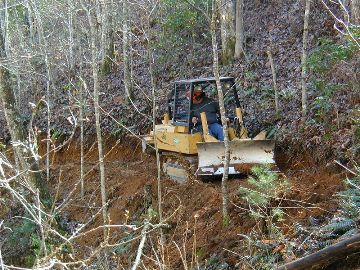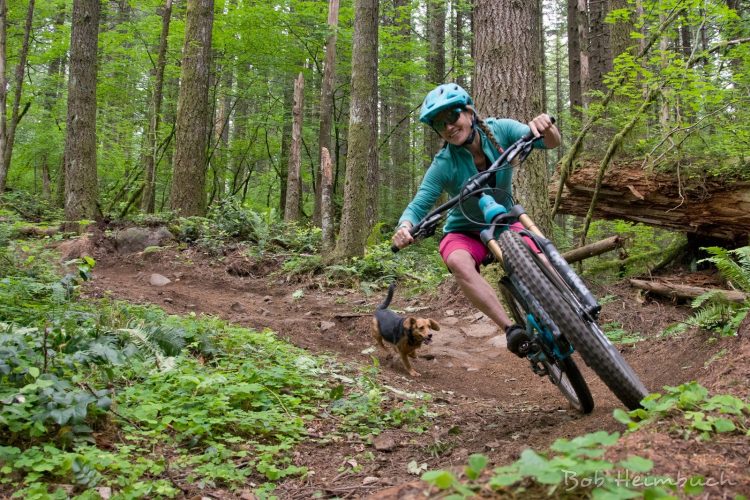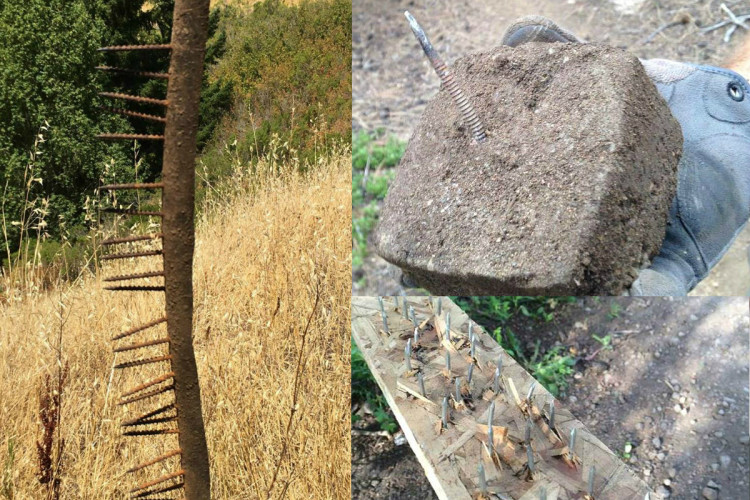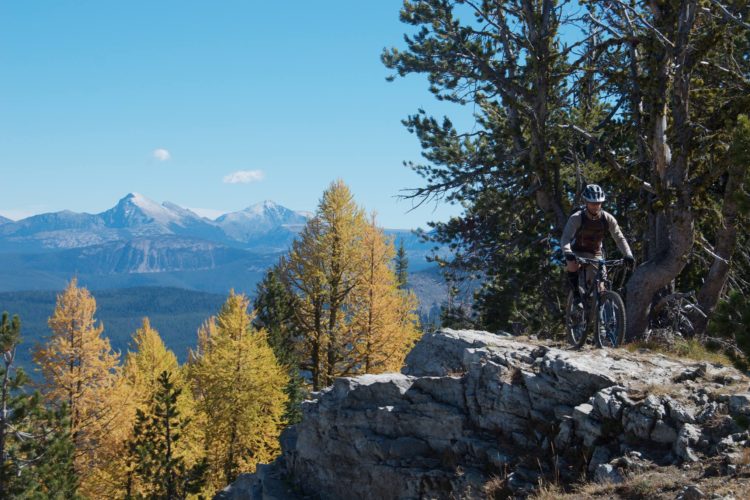More and more, I find myself having trail déjà vu—the feeling that I’ve ridden this trail before—even when I haven’t. With over 350 trails under my knobbies, you might think it’d be easy to forget that I had ridden a particular trail before, but that’s not it. My mind naturally remembers, catalogs, and categorizes by a variety of factors every trail I’ve ridden. Forgetting I’ve ridden a particular trail just simply isn’t going to happen.
With that many trails behind me, it’d also be easy to think I’ve ridden every type of trail there is, so no matter what new trail I ride, it will at least seem like some other trail I’ve ridden. While there’s some merit in that thought, what I’m noticing here is something more… something based in a real trend and not just in my mind… something I call trail homogenization.
While I grew up drinking homogenized milk, and that’s okay, I’m not so keen on riding homogenized trails. There are a number of reasons for this genericizing of mountain bike trails, which have root causes ranging from historical to political to environmental to technological. While there’s a solid foundation under each of these root causes, the end results aren’t always appealing.

Historically, most of the trails we’ve ridden were far from homogenized because they weren’t designed with mountain bikes in mind. Mountain biking as we know it didn’t exist before the 1980s and didn’t gain widespread popularity until the 1990s. Consequently, the trails we rode were the original domain of hikers, motorcyclists, equestrians, or cross-country skiers. Trail design for each user group was pretty broad, so combining the full inventory of available trails yielded incredible variety for the mountain cyclist. While the trails my not have been originally designed and built for mountain bikes, mountain bikes were designed and built to be able to handle these trails. As mountain biking has grown, so have our skills as bikers; combine that with the improvements in technology, and there’s very little which can’t be ridden.
Now that mountain biking has a large, and growing, following, some new trails are being designed specifically for mountain biking. This usually means a certain grade, curves of a certain shape, often including berms, and routing over certain obstacles, but around other obstacles. Many of these new trails end up being very similar to each other. This doesn’t just pertain to new trails; as older trails require reroutes, the replacement sections often take on this “standard” character. Add to all this the continuing re-designation of currently bike-legal trails as hiker and/or equestrian only trails, and we lose a lot of that originality.
While it can be great fun to hit a purpose-built mountain bike trail specially designed to maximize and maintain flow, there’s a special satisfaction that comes with cleaning that craggy old bike-hostile trail with the inconvenient root garden and the super-tight, v-shaped switchbacks with rock drops right at the crux of the turns. I believe eliminating the latter and replacing it with the former chips away at an important part of the soul of our sport.

Politically, we face the loss of trail access as noted above, and, as we try to develop new trails, having multi-user support is often essential to the approval and funding of new trail projects as well as the maintenance of existing routes. Think of that exceptionally cool rock roller you want to route your next trail over: it’s death to an equestrian. If you want to be able to cut a new trail on public land, in most places, it helps to have the support of those equestrians, so the trail needs to be horse-friendly as well. Similarly, some features appealing to cyclist will be unappealing to hikers as well. Where we once had trails constructed with a particular user in mind, we now often try to design trails that will offend none, and in the end this is another uniqueness killer.
Beyond the history and the politics, our greatest difficulty in bounding what we can do with a trail may lie in the environment itself. Trails must be sustainable, more so today than ever. With population growth placing ever increasing demands on trails, only a well-designed trail will be able to survive the usage it receives. Furthermore, with budgets for trail maintenance being cut, trails must be able to stand on their own with minimal assistance.

There are many elements of sustainable trail design which drive a similarity between trails designed to those parameters. Sometimes it’s fun to just point your knobbies straight downhill and let ‘er rip… but not on a sustainable trail! Straight fall-line trails are the perfect path to erosion and unsustainability, so trails on hilly terrain must be side cut. Even then, the grade cannot exceed a certain percentage, especially over a long distance. Each steep section must be cut short and followed by a level or slight uphill section to prevent too high a volume of water from gaining too much force, which can again drive erosion and unsustainability.
Many bikers tend to charge hard and then hit the brakes at the last second when faced with a sharp turn or switchback. Skidding is yet another erosion creator. Consequently, modern trail design dictates a gradual slowing of speed to prevent the need to skid, again driving a similarity in final trail shape.

Cutting new trail is hard work. It requires a great deal of labor, which means either an army of volunteers or a big checkbook to turn over to a commercial trail building agency. We now have access to machines which cut new trail at many times the rate of human beings with Pulaskis and McLeods. These technological marvels also create a uniformly homogenized trail.

I have reached the point where I don’t go into a new trail with the expectation of having a unique experience. Many trails tout that they are “IMBA designed” with great fanfare, yet I now approach these trails with some trepidation. There’s nothing worse than expending the time and money to take a mountain biking trip only to find the trails you’re visiting look a lot like the trails at home. Yet I have hope that this trend can be halted, or at least mitigated. There are a few things which must be done to prevent mountain biking from becoming stagnant and predictable:
1. Get involved in any public process where you can add your voice to those calling for continued access to those trails where bikers have historically ridden. Continued access to those original, unique trails is absolutely essential to the preservation of the essence of our sport.
2. When building new trails or rerouting existing trails, take every opportunity to incorporate the unique features of that particular topography into the trail experience. While jumps and berms can be fun, they are not fun for hikers or equestrians, and they are an increasingly artificial modification of the landscape rather than a harmonious existence with it. You can build jumps and wooden walls anywhere, but that rock on the side of the mountain? It is unique unto itself, and making it part of your ride will make the ride unique.
3. Break the rules of sustainable trail design when it can be done without undue reduction in sustainability. Anyone who’s ridden Zippity Doo Dah in Fruita knows there are long pitches on that trail which are far in excess of what would normally be a sustainable grade. However, the way that soil compacts, combined with the low moisture the area receives, makes these pitches prime for ripping fall line runs.
4. Get out there and build trail yourself… by hand, when possible. Make it narrow, give it contours, and most importantly, give it character.
Bottom line: as trail consumers, we need to be clear to the powers that be, whether they be private interests or state, local, or national authorities, what type of trail experience we want. If, in the aggregate, we want a Wal-Mart or McDonalds equivalent experience, so be it. But I’m willing to wager most of us would rather have a local, mom-and-pop shop-style mountain bike trail experience, with each trail providing its own entertaining, unique vibe.
Your Turn: We want to hear your thoughts on trail homogenization. Sound off in the comments section below!



















